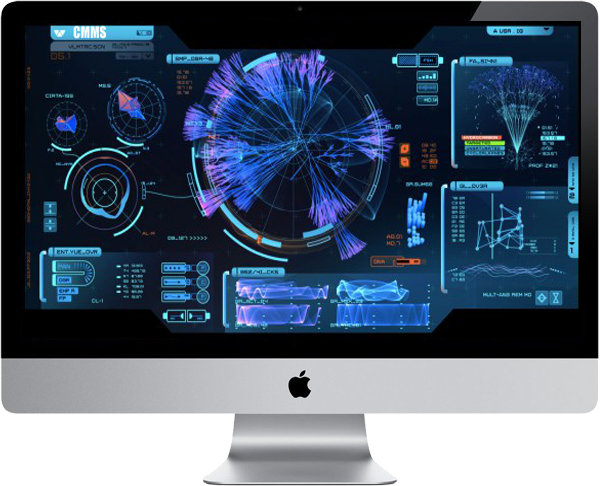With the current economy and tight budgets for many of us, enterprises often question whether computerized maintenance management software (CMMS) is really necessary and financially feasible. To answer this, we can take a look at a few different angles, including what it really is and what it does, how it can benefit your business, how this was handled prior to the age of computers and how to choose the correct type for your operation.
What is CMMS?

Computerized maintenance management software is described by WIKI like this - "A CMMS software package maintains a computer database of information about an organizations maintenance operations, i.e. CMMS computerized maintenance management information system. This information is intended to help maintenance workers do their jobs more effectively ... ", however in all reality it really does more than just that. Part of the program can issue work orders, and keep track of maintenance activities, dates, expenses involved including parts and supplies. Maintenance schedules can be easily maintained, which can affect work assignments and scheduling, parts and supplies inventory, better management on necessary spare parts and supplies to control inventory costs. The data involved can also furnish financial information and comparisons such as "calculating the cost of machine breakdown repair versus preventive maintenance for each machine, possibly leading to better allocation of resources. CMMS data may also be used to verify regulatory compliance."
Since Maintenance is defined as any action that restores failed units to an operational condition or retains non-failed units in an operational state, CMMS needs to deal with all sides of the spectrum. For repairable items, maintenance plays a vital role in the life of an item. It affects the items overall reliability, availability, downtime, cost of operation, etc. Generally, maintenance actions can be divided into three types: corrective maintenance, preventive maintenance and inspections.
Corrective Maintenance
Corrective maintenance consists of the action(s) taken to restore a failed system to operational status. This usually involves replacing or repairing the component that is responsible for the failure of the overall system. Corrective maintenance is performed at unpredictable intervals because a component's failure time is not known. The objective of corrective maintenance is to restore the system to satisfactory operation within the shortest possible time. Corrective maintenance is typically carried out in four steps:
- Diagnosis of the problem - The maintenance technician must take time to locate the failed parts or otherwise satisfactorily assess the cause of the system failure.
- Repair and/or replacement of faulty component(s) - Once the cause of system failure has been determined, action must be taken to address the cause, usually by replacing or repairing the components that caused the system to fail.
- Verification of the repair action - Once the components in question have been repaired or replaced, the maintenance technician must verify that the system is again successfully operating.
- Reporting Registration of the process must be completed by the technician to ensure future data analysis.
Preventive Maintenance
Preventive maintenance, unlike corrective maintenance, is the practice of replacing components or subsystems before they fail in order to promote continuous system operation. The schedule for preventive maintenance is based on observation of past system behavior, component wear-out mechanisms and knowledge of which components are vital to continued system operation. Cost is always a factor in the scheduling of preventive maintenance.
Preventive maintenance is a schedule of planned maintenance actions aimed at the prevention of breakdowns and failures. The primary goal of preventive maintenance is to prevent the failure of equipment before it actually occurs. It is designed to preserve and enhance equipment reliability by replacing worn components before they actually fail.
Inspections
Inspections are used in order to uncover hidden failures (also called dormant failures). In general, no maintenance action is performed on the component during an inspection unless the component is found failed, in which case a corrective maintenance action is initiated.
Back in the day
In the past many businesses kept track of the assets, equipment and inventory using an index card system. These card catalogs were maintained in cabinets like those you may remember seeing in a public library - remember the Dewey Decimal System? All the pertinent data about each item was recorded on this card including information like the name of the item, brand, manufacturer, serial number, date acquired, repair dates and description, etc ... The cards were retrieved and updated any time some action was taken or the information was required for accounting purposes, tax purposes, inventory, or whatever else. Another manual method of recording maintenance (that believe it or not is still being used today), involves date stamping things. Some places record the date a light bulb was changed, like on the back side of a light fixture where it won't be seen by the public, but the people in charge can find out how long that previous bulb lasted.
What is best for your organization?
When it comes to choosing a CMMS solution for your organization we suggest to heavily weigh the product's ability to work on a daily basis. Loading up with features you won't use or that become too difficult to maintain regularly will simply cost the company time and money. Focus on those three core maintenance actions and you are sure to come out with a winning formula. A computerized maintenance management system (CMMS) will bring you peace of mind of knowing that you are doing as much as possible to keep your guest and residents safe and keeping your maintenance staff productive. Now is theres no better ROI than that?









